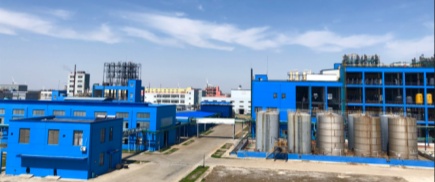China National Chemical Information Center hosted 7thInternational Slow/Controlled-Fertilizer Conference on June 16-17 in Beijing. The sponsors for this event this year included Kingenta, Kingorigin Biotech, and Moith.
Speakers of the conference included:
1) YANG Fan of China National Extension and Service Center of Agricultural Technologies, on Soil Test-Based Fertilization and the Application of Slow/Controlled-Release Fertilizers.
2) WANG Xu of State Supervision and Testing of Fertilizer Quality (Beijing), on the Administration of Slow/Controlled-Release Fertilizers.
3) LI Yunchong of the University of Florida, on Development of Slow/Controlled-Release Fertilizer in US, and the Status of Its Use.
4) WANG Shenqiang of Nanjing Institute of Soil under the Chinese Academy of Sciences, on the Evaluation of Agricultural and Environment Effect of the Application of Controlled-Release Urea on Rice and Wheat in Taihu Lake Areas.
5) ZHANG Min of Shandong Agricultural University, on the Progress of China's Slow/Controlled-Release Fertilizer Technology and Industrialization.
6) FAN Mingxian of the Sulphur Institute, on Role of S and Micronutrient in Enhanced Efficiency Fertilizer.
7) XU Qiuming of Beijing Institute of Agricultural and Forest Sciences, on Introduction of a Few Slow/Controlled-Release Fertilizers.
8) HU Shuwen of China Agricultural University, on R&D and Application of Specialty Slow/Controlled-Release Fertilizers.
YU Youcheng of the MIIT reviewed the performance of China's fertilizer industry in 2013 and Q1 2014. He mentioned that China exported 8.24 million tons of fertilizer in the first five months of this year, more than double that in the same period of last year.
XIU Xuefeng presented an overview of China's phosphate and compound fertilizer industry, and then put forward her personal opinions on the development of China's slow/controlled-release fertilizer industry:
1) the slow/controlled-release fertilizer makers had better pay more attention to enhancing N efficiency of the products, enable the products to accommodate low temperature conditions, avoid soil pollution from the coating materials, better control the release rate of nutrients, and add micronutrients to the products. 2) the distributors (makers) of slow/controlled-release fertilizers should provide instructions on the application of the products, and they may develop a longer product chain, even including growing and processing agricultural products. 3) the industry should make greater efforts to streamline the product standards and regulations on the production of the products, and to streamline the application technologies and methods of the products。


